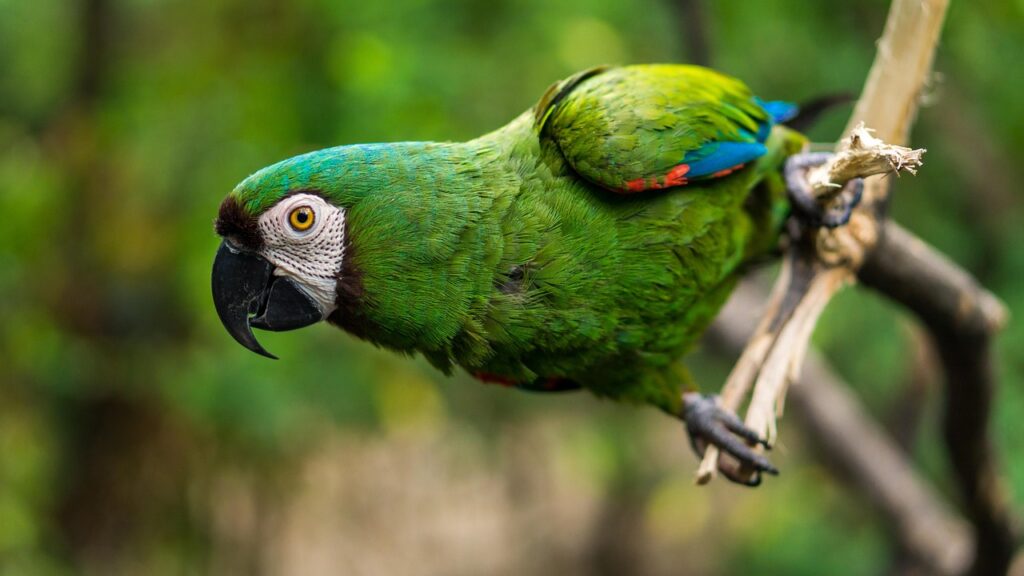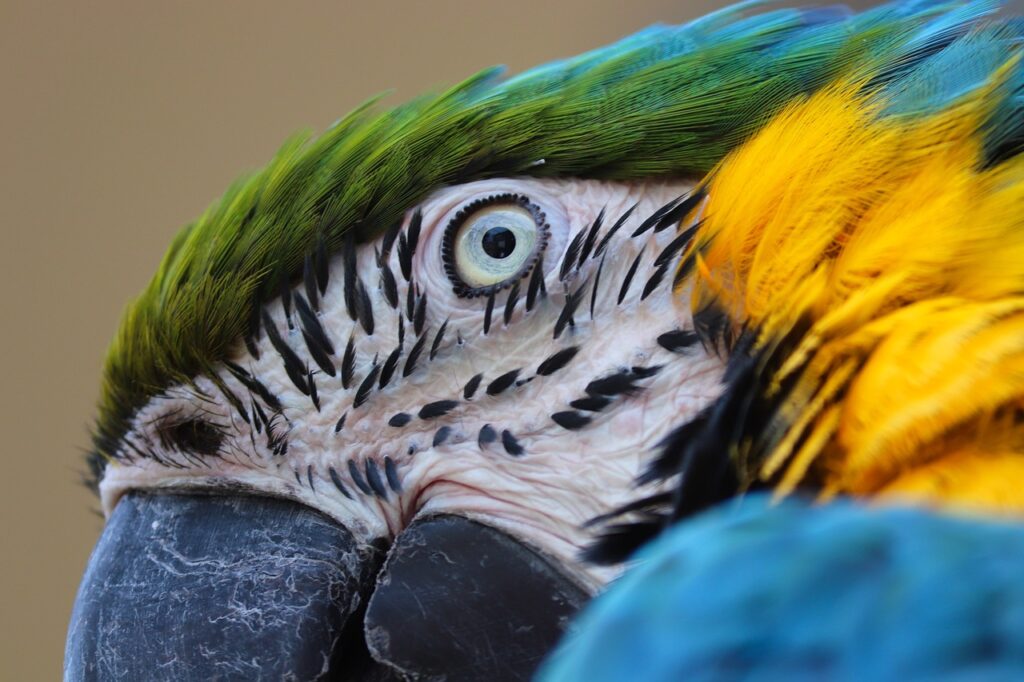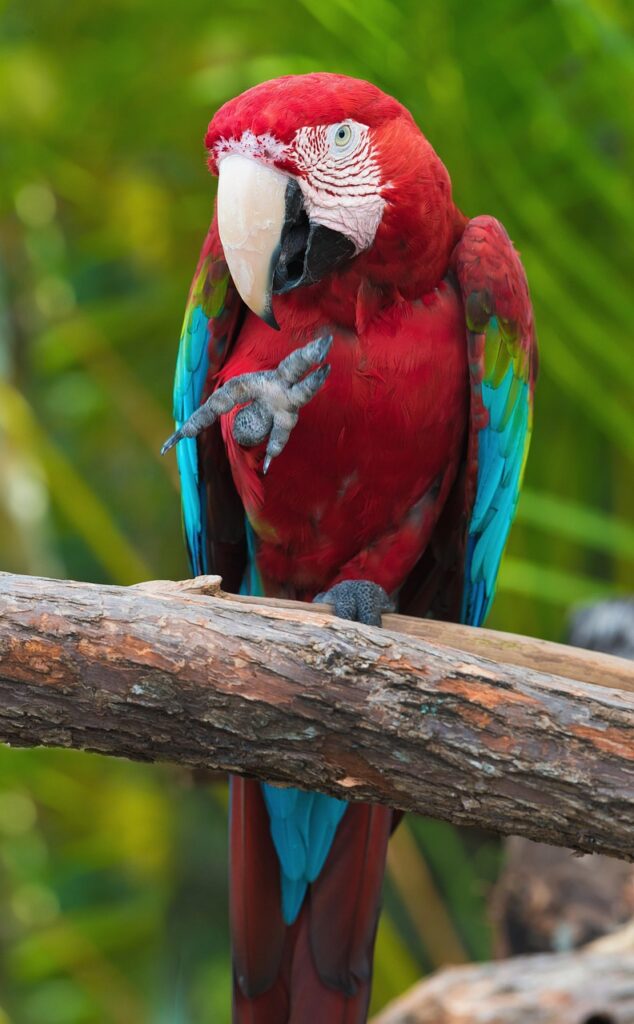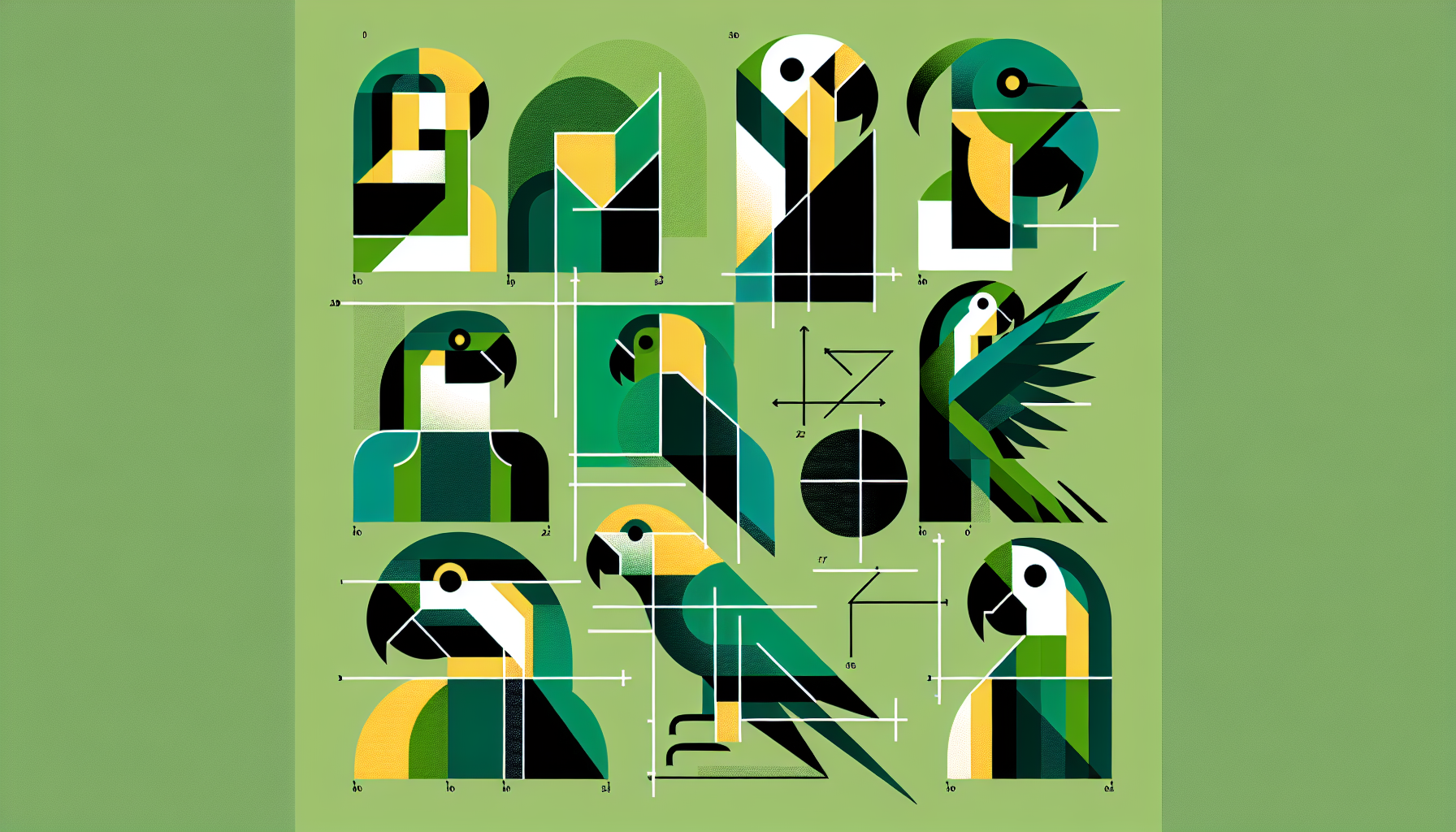Table of Contents
Cracking the Code: Parrot Body Language
Got a parrot, or are you thinking about getting one? These clever birds chat with us through their body language, so knowing what they’re saying is key. Let’s break it down.
Why Body Language Matters
Parrots don’t just squawk to communicate. They use their eyes, feathers, and posture to describe their feelings. Understanding parrot body language is essential for communicating effectively.
Different types of parrots have their own ways of showing emotions. African Greys and Cockatoos are more subtle, while Macaws and Amazons are like the drama queens of the bird world. Knowing these differences helps you understand what your bird is trying to say.

Decoding Parrot Signals
Understanding your parrot’s body language is like learning a new language. Here are some common cues and what they might mean:
| Body Language Cue | What It Means |
|---|---|
| Dilated Pupils | Excited or Angry |
| Fluffed Feathers | Comfy or Sick |
| Pinned Feathers | Scared or Mad |
| Relaxed Posture | Happy |
For example, if your parrot’s pupils are dilated, they might be super excited or about to throw a tantrum. Fluffed feathers can mean they’re feeling cozy or maybe not feeling well.
Want to dive deeper? Check out our articles on parrot care tips and parrot behavior problems.
Building a Better Bond
You can build a strong, trusting relationship with your parrot by watching these cues and responding correctly. For more information on different parrot species and their quirks, look at our articles on the types of parrots and colorful parrot species.
Keep an eye on your feathered friend, and you’ll be chatting like old pals in no time.
Visual Signals in Parrots
Getting a grip on parrot body language can seriously up your game in bonding with these clever birds. Let’s break down two big visual cues: blushing and eye expressions.
Blushing Behavior
Yep, parrots can blush! It’s super noticeable in birds like the military macaw (Ara militaris) and the blue and yellow macaw (Ara ararauna). When they blush, the skin around their face turns pink or red. This happens for all sorts of reasons—maybe they’re happy, amused, or even scared (Exotic Direct).
Different parrots blush differently. For example, military macaws are like the blushing champs compared to other macaws (Pamela Clark Online). Watching and figuring out this behavior can give you a peek into your parrot’s feelings.
| Species | Blushing Intensity |
|---|---|
| Military Macaw | High |
| Blue and Yellow Macaw | Moderate |
| Other Macaws | Low |
Eye Expressions
Parrots have a lot to say with their eyes. One thing they do is eye pinning, where their pupils get big and small really fast. This can mean they’re excited, curious, or even ticked off. The trick is to watch what else is happening to figure out what they mean.
Here are some eye expressions and what they might be saying:
- Dilated Pupils: They’re pumped or super interested.
- Contracted Pupils: Watch out—they might be scared or mad.
- Slow Blinking: They’re chill and comfy.

Getting these visual signals down can help you get closer to your feathered buddy. For more tips on parrot behavior, check out our articles on parrot behavior problems and parrot amazing facts.
By keeping an eye on these signals, you’ll get better at understanding and meeting your parrot’s needs, making for a happier, healthier relationship with your bird.
What’s Up with Parrot Moves?
Ever wondered what your parrot’s quirky movements mean? Decoding their body language can reveal a lot about their feelings and what they want. Let’s break down two common parrot behaviors: head-bobbing and the one-leg stance.
Head-Bobbing
Head-bobbing is a classic parrot move, from baby birds to the old-timers. This action usually screams excitement and can also be a mating call (Exotic Direct). When your parrot starts bobbing its head, it might be thrilled about something or just eager to hang out.
| Age Group | Why They Bob Their Heads |
|---|---|
| Baby Parrots | Hungry, Want Attention |
| Adult Parrots | Excited, Flirting |
According to Pamela Clark Online, head-bobbing is a key part of parrot chatter, along with eye and feather movements. Watching these actions can help you get what your feathered buddy is trying to say.
Curious about more parrot antics? Check out our articles on parrot behavior problems and parrot talking ability.
One-Leg Stance
Another common move is the one-leg stance. When your parrot stands on one leg, it’s usually a sign they’re chill and comfy. You’ll often see this when they’re resting or catching some Z’s. It means they feel safe and sound.
| What They Do | What It Means |
|---|---|
| One-Leg Stance | Relaxed, Comfortable |
Keeping an eye on your parrot’s stance can tell you a lot about their mood. If they’re often on one leg, they’re probably happy and relaxed. If not, they might be stressed or uneasy.

Want to make your parrot feel more at home? Check out our tips on parrot cage setup and parrot care tips.
Understanding these moves can help you bond better with your parrot and keep them happy. By paying attention to their body language, you can build a stronger, more trusting relationship with your feathered friend.
Emotional Indicators in Parrots
Got a parrot? Then you know they’re not just pretty faces with feathers. These smart birds have their own way of showing how they feel, and if you pay attention, you can really get to know them. Let’s talk about two big ways they show their emotions: fluffing their cheek feathers and purring.
Fluffing Cheek Feathers
Ever seen your parrot puff up those cheek feathers? Especially cockatoos—they love doing this. When they fluff up their cheek feathers, it’s like they’re saying, “I’m comfy and happy here.” It’s a sign they feel safe and relaxed. You might also notice them grinding their beak or half-closing their eyes. These are all good signs that your bird is chill and content.
| Behavior | Meaning |
|---|---|
| Fluffing Cheek Feathers | Feeling good |
| Beak Grinding | Relaxed |
| Half-closed Eyes | Trusting you |
Want to know more about what your parrot’s up to? Check out our article on parrot behavior problems.
Purring Behavior
Yes, parrots can purr! It’s not just for cats. When a parrot purrs, it’s usually a sign they’re feeling affectionate. Just don’t mix it up with a low growl, which means they’re scared. When they purr, they might also nuzzle up to you or start preening. These are all signs they’re really into you and feel bonded.
| Behavior | Meaning |
|---|---|
| Purring | Loves you |
| Nuzzling | Feels close to you |
| Preening | Trusts you |
Knowing these signs can really help you connect with your parrot. For more tips on bonding with your bird, check out our guide on how to train a parrot.
Keep an eye out for other cues like wing greetings and tail wagging. These little signals can tell you a lot about how your parrot is feeling. For more on keeping your parrot happy and healthy, dive into our parrot care tips.
Talking with Wings: Parrot Gestures Decoded
Parrots have a quirky way of chatting without saying a word. By tuning into their gestures, we can get closer to our feathered pals. Let’s break down two common moves: wing greetings and tail wagging with a side of feather fluffing.
Wing Greetings: A Feathered Hello
Parrots love to use their wings to express themselves. One of the cutest gestures is the wing greeting. When your parrot stretches out one wing, curls up its claw, and stretches the leg on the same side, it’s saying, “Hey there, good to see you!” This move, often paired with a friendly look, shows they’re happy you’re back (Exotic Direct).
| Wing Greeting | What It Means |
|---|---|
| One wing out, claw curled, leg stretched | Happy you’re here |
This simple gesture is a sweet sign of your parrot’s affection and joy. Spotting these signals helps us appreciate their unique way of showing love and excitement.
Tail Wagging and Feather Fluffing: Happy Dances
Parrots also communicate through tail wagging and feather fluffing. When your parrot rapidly flips its tail, it’s usually a sign they’re thrilled to see you. The intensity can vary, with bigger, more laid-back parrots showing their happiness in a more chill manner (Exotic Direct).
| Tail Wagging and Feather Fluffing | What It Means |
|---|---|
| Rapid tail flipping | Joy and excitement |
| Fluffing up feathers | Hello or feeling comfy |
Feather fluffing is another way parrots say hello. It can also mean they’re feeling cozy and content. By noticing these little cues, we can better understand our parrot’s mood and react in a way that makes them feel loved.
For more tips on parrot behavior, check out our articles on parrot behavior problems and parrot funny moments. Understanding these gestures is just one step towards a stronger bond with our avian buddies.
Understanding Your Parrot’s Behavior
Getting to know your parrot’s body language is key to building a strong bond with these clever birds. By watching how they act, you can learn a lot about their feelings and needs.
Straight Talk
Parrots are pretty straightforward with their body language, making it easier for us to figure out what they want or how they’re feeling. Unlike people, who might hide their true emotions, parrots show their feelings through their bodies, posture, and feathers. For instance, if you see your parrot grinding its beak or flaring its tail, it’s giving you a peek into its mood and health.
| Behavior | Meaning |
|---|---|
| Beak Grinding | Feeling content and relaxed |
| Tail Flaring | Either excited or feeling aggressive |
| Fluffing Feathers | Could be comfy or feeling sick |
| Eye Pinning | Showing interest or excitement |
Knowing these behaviors helps you react the right way and build trust with your feathered buddy. Want to learn more about training and talking to your parrot? Check out our parrot training guide.
Building a Bond
Creating a strong bond with your parrot involves positive reinforcement and paying close attention to their body language. Good communication means listening to their signals and responding in a way that makes them feel good.
Some key signs to watch for include:
- Wing Greeting: If your parrot spreads its wings a bit when it sees you, it’s saying hello and is happy to see you.
- Head Bobbing: This usually means they’re excited or want some attention. Responding with play or petting can make your bond stronger.
- One-Leg Posture: When your parrot stands on one leg, it’s a sign they’re relaxed and trust you. It means they feel safe and comfy around you.
| Cue | Response |
|---|---|
| Wing Greeting | Say hello back with gentle words or a treat |
| Head Bobbing | Play with them or give them some petting |
| One-Leg Posture | Keep things calm to show they’re safe with you |
For more tips on making your parrot feel at home, check out our parrot care tips.
By paying attention to these signs, you can better understand and connect with your parrot, making sure they feel secure and loved. For more cool info on parrot behavior, take a look at our articles on parrot behavior problems and parrot health issues.

